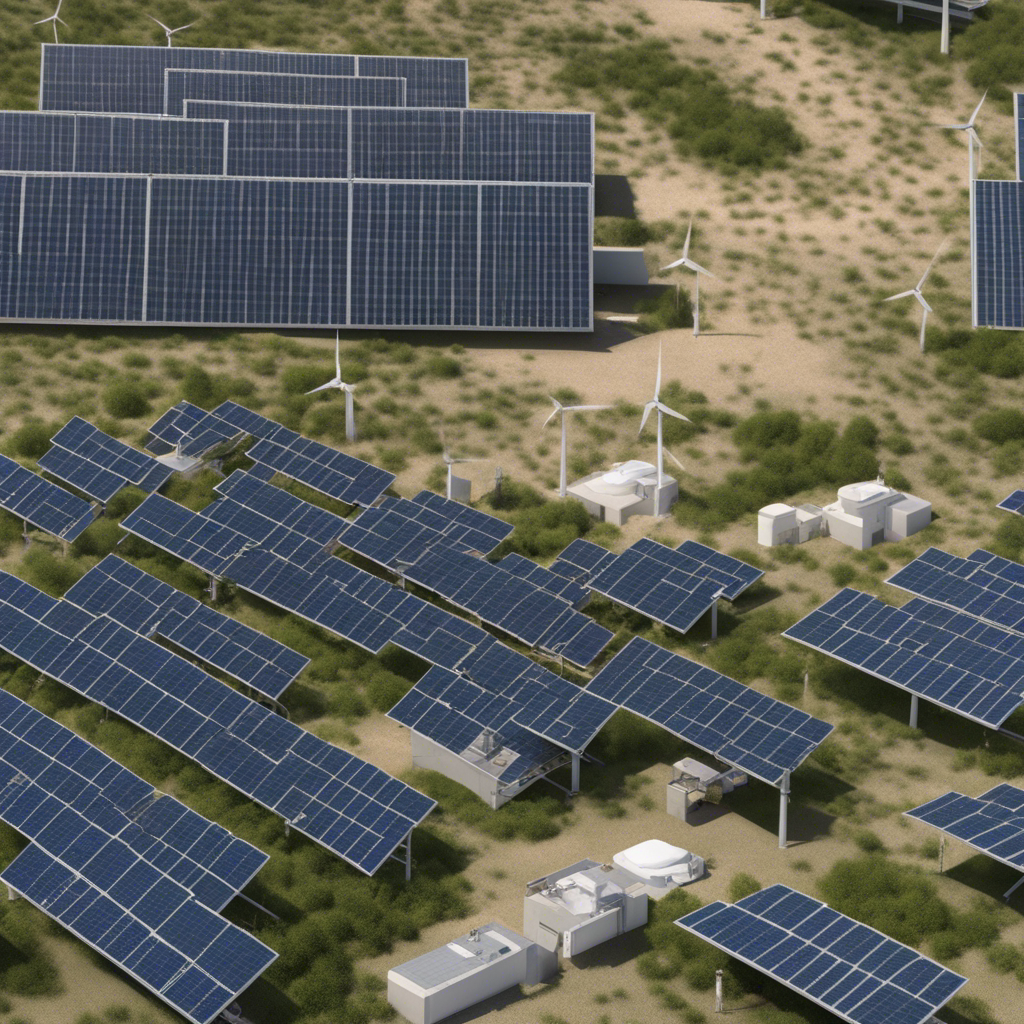
Green Tech Sustainable Solutions for a Better Future
Introduction
As the world grapples with the challenges of climate change and environmental degradation, the importance of sustainable solutions has become paramount. Thankfully, advances in green technology have laid the foundation for a better, more sustainable future. In this blog post, we will explore the various green tech solutions that can help society transition towards a more sustainable path.
1. Renewable Energy Sources
One of the key aspects of green tech is the harnessing of renewable energy sources. Renewable energy, such as solar, wind, hydro, and geothermal power, offers a clean and sustainable alternative to traditional fossil fuel-based energy.
Solar Power
Solar power is undoubtedly one of the most promising and widely adopted renewable energy sources. The use of photovoltaic (PV) panels to convert sunlight into electricity has skyrocketed in recent years. The declining cost of solar panels, coupled with government incentives, has made solar power an attractive option for both residential and commercial purposes1.
Wind Power
Wind power is another green tech solution that has gained significant traction. Wind turbines harness the power of wind to generate electricity. Advances in turbine design and technology have made wind power more efficient and cost-effective in recent years. Offshore wind farms have also emerged as a promising option, harnessing the abundant wind resources found in coastal areas2.
Hydro and Geothermal Power
Hydropower relies on the energy of flowing or falling water to generate electricity. It is one of the oldest and most widely used renewable energy sources. Geothermal power, on the other hand, harnesses the heat from the Earth’s core to produce energy. Both hydropower and geothermal power offer reliable and sustainable alternatives to fossil fuel-based energy34.
2. Energy Storage and Grid Integration
An important aspect of green tech solutions is the efficient storage and integration of renewable energy into existing power grids. Energy storage technologies allow for better utilization of intermittent sources like solar and wind, ensuring a continuous and reliable power supply.
Battery Technologies
In recent years, advancements in battery technologies have been instrumental in enabling the integration of renewable energy into the grid and facilitating the growth of electric vehicles. Lithium-ion batteries, for example, have made great strides in terms of cost reduction and energy storage capacity. Additionally, research is underway to develop more sustainable and efficient battery chemistries5.
Smart Grids and Demand Response
Smart grids, enabled by advanced digital technologies, allow for efficient and intelligent monitoring and management of the electrical grid. By integrating real-time data and analytics, smart grids can optimize energy distribution, reduce transmission losses, and accommodate renewable energy sources more effectively. Demand response mechanisms also empower consumers to actively participate in the energy market by adjusting their consumption based on supply and demand fluctuations6.
3. Sustainable Transportation
The transportation sector is a significant contributor to greenhouse gas emissions. Green tech solutions aimed at sustainable transportation hold great promise for reducing pollution and dependency on fossil fuels.
Electric Vehicles (EVs)
The adoption of electric vehicles has accelerated in recent years, driven by advancements in battery technologies, government incentives, and a growing concern for air quality. EVs produce zero tailpipe emissions and, when charged with renewable energy, offer an environmentally friendly alternative to conventional vehicles. Infrastructure developments like public charging stations are also vital to support the widespread adoption of EVs7.
Mass Transit and Alternative Fuels
Sustainable transportation solutions are not limited to individual vehicles. Public transportation systems play a crucial role in reducing traffic congestion and emissions. Investing in mass transit infrastructure and fuel-efficient public transportation options, such as buses powered by alternative fuels like electricity, hydrogen, or biofuels, can significantly contribute to a greener transportation sector89.
4. Green Building Practices
Green building practices aim to minimize the environmental impact of the construction industry, which is notorious for high energy consumption and waste generation.
Energy-Efficient Design
Integrating energy-efficient design techniques into buildings can significantly reduce energy consumption and greenhouse gas emissions. Strategies such as proper insulation, passive heating and cooling, utilization of natural light, and energy-efficient appliances can make buildings more sustainable and reduce their carbon footprint10.
Green Materials
Opting for eco-friendly and sustainable building materials is another critical aspect of green building practices. Materials like recycled steel, sustainably sourced wood, and low VOC (volatile organic compound) paint contribute towards a healthier and greener built environment11.
Conclusion
The integration of green tech sustainable solutions is an imperative step towards achieving a better future. From harnessing renewable energy sources to implementing energy storage technologies, sustainable transportation options, and green building practices, there are numerous ways to make our society more sustainable. By investing in these green tech solutions, we can mitigate the impacts of climate change, reduce pollution, and pave the way for a greener, more sustainable world.
Remember that the discussion in this blog post only scratches the surface of the vast realm of green tech solutions. Exploring and supporting these initiatives can lead us towards a brighter and more sustainable future for all.
Note: This blog post is for informational purposes only. Please consult with experts and professionals for specific advice and guidance related to green tech solutions.
[References]
-
International Energy Agency (IEA). (2021). Tracking the sun: Prices and scaling in the solar PV power sector. Link ↩︎
-
Global Wind Energy Council (GWEC). (2020). Global Wind Report 2020. Link ↩︎
-
International Hydropower Association (IHA). (n.d.). Hydropower basics. Link ↩︎
-
Geothermal Energy Association (GEA). (2020). Geothermal energy - the main renewable energy missing from the climate change debate. Link ↩︎
-
Battery Council International (BCI). (n.d.). Technology. Link ↩︎
-
International Energy Agency (IEA). (2021). Global EV outlook 2021. Link ↩︎
-
United Nations Environment Programme (UNEP). (2020). Sustainable mobility. Link ↩︎
-
International Energy Agency (IEA). (2021). The future of trucks: Implications for energy and the environment. Link ↩︎
-
U.S. Green Building Council (USGBC). (n.d.). LEED v4: Building design and construction. Link ↩︎
-
Green Building Council of Australia (GBCA). (n.d.). What is a green building? Link ↩︎






